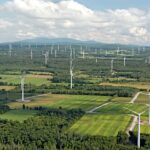Energy News Beat
On June 24, 2025, New York’s power grid faced a critical test as temperatures soared to 99°F in Central Park, pushing electricity demand to precarious levels. The New York Independent System Operator (NYISO) issued a rare energy warning, signaling potential rotating outages due to declining operating reserves. By late Tuesday, the grid stabilized, but the event raised questions about the state’s energy mix, the role of renewables in grid reliability, and how New York’s electricity costs stack up against other states and the world. This article dives into these issues, leveraging data from the U.S. Energy Information Administration (EIA), NYISO, and other sources, while critically examining the narrative around renewable energy’s impact.
The real energy crisis is in our grid.
On this very warm morning at 6 a.m., only 2% of the power from the PJM grid was coming from wind and solar – 98% from other sources.
The idea that we can power our country on intermittent power on a day like today is a fantasy. pic.twitter.com/yk3tP4dhPA
— Secretary Doug Burgum (@SecretaryBurgum) June 25, 2025
New York’s Energy Mix: A Snapshot
New York’s electricity generation in 2023 reflects a diverse but transitioning energy portfolio, shaped by the state’s ambitious Climate Leadership and Community Protection Act (CLCPA), which mandates 70% renewable electricity by 2030 and 100% zero-emission electricity by 2040. According to the EIA and NYISO, the 2023 energy mix for net electricity generation was:
-
Natural Gas: 44% (dominant source, fueled by in-state plants, many over 50 years old)
-
Hydroelectric: 22% (third-largest producer nationally, led by the 2,500 MW Robert Moses Niagara plant)
-
Nuclear: 22% (down from 34% in 2019 after the Indian Point plant closure)
-
Wind: 4% (2,900 MW capacity across 35 utility-scale wind farms)
-
Solar: ~3% (record growth in 2023, surpassing biomass)
-
Biomass and Other Renewables: ~1% (includes methane, refuse, and wood)
-
Petroleum: 0.3% (used sparingly as backup)
-
Coal: 0% (last coal plant closed in 2020)
On June 24, 2025, during the heatwave, real-time data from NYISO showed fossil fuels (primarily natural gas) providing 67% of electricity, with hydro at 17%, nuclear at 12%, wind at 4%, and other renewables (solar, storage, etc.) at 1%. This heavy reliance on fossil fuels during peak demand highlights the challenges of transitioning to renewables while maintaining grid stability.
Renewable Energy and Grid Stability: A Double-Edged Sword?
New York’s push for renewables has made it a leader east of the Mississippi, ranking fifth nationally in renewable electricity generation in 2023. Hydroelectric power, a stable renewable source, accounts for over half of the state’s renewable output, while wind and solar are growing rapidly. The South Fork Wind project (130 MW), the state’s first offshore wind farm, came online in mid-2024, and plans for 9,000 MW of offshore wind by 2035 are underway. Solar generation hit record levels in 2023, surpassing biomass for the first time.
However, the June 24 energy warning exposed vulnerabilities in the grid’s reliance on intermittent renewables like wind and solar. During the heatwave, wind contributed only 4% and solar even less, as solar output drops in the evening when air conditioning demand peaks. The premature retirement of fossil fuel plants, driven by green policies, has reduced baseload capacity, leaving the grid fragile during extreme weather. The closure of the Indian Point nuclear plant in 2021, which provided 2,000 MW of reliable power, exacerbated this issue. Critics argue that replacing stable fossil and nuclear capacity with weather-dependent renewables without sufficient storage or dispatchable zero-emission resources (e.g., advanced nuclear or hydrogen) risks grid instability.
NYISO’s 2024 forecast warns that electricity demand could rise 50-90% by 2042, driven by electrification, data centers, and manufacturing (e.g., Micron’s $100 billion chip hub). To meet 2040 goals, 20-40 GW of dispatchable emissions-free resources (DEFRs) like long-duration batteries or small modular nuclear reactors are needed to replace 25 GW of retiring fossil plants. Without these, high-demand scenarios could lead to blackouts as early as 2032, especially in New York City and Long Island.
Yet, renewables aren’t solely to blame. Aging infrastructure, insufficient transmission lines (only half of NYC’s power comes from outside the city), and underinvestment in grid resilience also contributed to the warning. The CLCPA’s aggressive timelines have outpaced the deployment of storage and transmission upgrades, leaving natural gas as a critical bridge fuel. Governor Hochul’s recent directive to develop a 1 GW advanced nuclear plant signals a recognition that renewables alone can’t ensure reliability.
Electricity Costs: New York vs. Top 10 States and Global Ranking
New York’s electricity prices are among the highest in the U.S., driven by deregulation, infrastructure upgrades, taxes, and renewable energy mandates. In August 2024, the average residential electricity rate in New York was 25 cents per kilowatt-hour (kWh), translating to a monthly bill of about $249 for a typical household. Commercial rates average 10-11 cents/kWh, varying by usage and provider.
Below is a comparison of New York’s average residential electricity rates (cents/kWh) with the top 10 other states, based on EIA data for 2024, followed by their global context:
|
State
|
Average Residential Rate (cents/kWh)
|
Notes
|
|---|---|---|
|
Hawaii
|
42.0
|
Highest in U.S., driven by reliance on imported oil and isolated grid
|
|
California
|
31.2
|
High due to renewable mandates, grid upgrades, and wildfire mitigation
|
|
Massachusetts
|
28.5
|
Deregulated market, high renewable penetration, and aging infrastructure
|
|
Rhode Island
|
27.8
|
Small state, high transmission costs, and renewable energy goals
|
|
Connecticut
|
26.9
|
Similar to NY, with deregulated market and nuclear reliance
|
|
New York
|
25.0
|
Deregulated, high taxes, and CLCPA-driven infrastructure costs
|
|
Alaska
|
24.5
|
Remote grids, high fuel transport costs
|
|
New Hampshire
|
23.8
|
Deregulated, increasing renewable integration
|
|
Vermont
|
21.5
|
High hydro reliance, small population
|
|
Maine
|
20.9
|
Renewable growth, rural grid challenges
|
|
Michigan
|
19.2
|
Lower rates due to coal and natural gas dominance
|
Data Source: U.S. Energy Information Administration, 2024 residential electricity price data.

Global Ranking: According to the Global Energy Institute’s 2024 data, U.S. electricity prices (average 16.9 cents/kWh) rank moderately high globally. New York’s 25 cents/kWh places it among the top 20% of global residential rates, comparable to countries like Germany (28 cents/kWh) and Italy (26 cents/kWh), where heavy renewable subsidies and taxes drive costs. By contrast, states like Louisiana (11.5 cents/kWh) align with lower-cost nations like Norway (12 cents/kWh), which benefits from abundant hydro. New York’s high rates reflect its deregulated market, where consumers can choose suppliers but face rising delivery charges (e.g., Con Edison’s proposed 11.4% electricity rate hike for 2026).
Why Are New York’s Costs So High?
Several factors drive New York’s elevated electricity prices:
-
Infrastructure Upgrades: The CLCPA requires massive investments in transmission and renewable projects, passed onto consumers via delivery fees. Con Edison’s 2026 rate hike aims to fund these.
-
Taxes: Property taxes on energy infrastructure cost utilities like Con Edison over $3 billion annually, embedded in bills.
-
Deregulation: Since 1997, New York’s deregulated market allows supplier choice but introduces volatility. Variable-rate plans tied to NYMEX fluctuate hourly, spiking during high-demand periods like June 2024.
-
Renewable Transition: While green plans (e.g., 100% wind/solar) reduce carbon footprints, their integration requires costly grid enhancements. Subsidies like NY-Sun and net metering lower solar costs but increase rates for non-solar customers.
-
Peak Demand: Heatwaves like June 2024 drove power prices to $7,300/MWh on Long Island and $3,000/MWh in NYC, reflecting supply constraints.
Looking Ahead: Balancing Reliability and Renewables
The June 24 energy warning underscores the delicate balance New York faces in its clean energy transition. While renewables like hydro, wind, and solar are critical to meeting CLCPA goals, their intermittency and the state’s lag in storage and transmission upgrades pose risks. Natural gas and nuclear remain vital for grid stability, yet fossil plant retirements and nuclear’s decline (post-Indian Point) strain capacity. NYISO’s call for DEFRs and Hochul’s nuclear initiative suggest a pragmatic shift, acknowledging that renewables alone can’t meet rising demand without compromising reliability.
For consumers, high electricity costs are a growing burden, especially in New York City, where bills rival those in Germany. As the state invests in offshore wind, solar, and advanced nuclear, ratepayers will bear the cost unless policies redirect tax revenues or incentivize efficiency. Programs like Con Edison’s smart meter rollout and demand response initiatives could ease peak loads, but they lag behind peers.
New York’s grid stabilization on June 24 was a win, but it’s a reminder that energy abundance—not just green ambition—is key to a reliable, affordable future. The state must critically assess its renewable rollout, prioritize dispatchable resources, and address infrastructure gaps to avoid future scares.
Sources:
-
ZeroHedge: “New York Power Grid Stabilizes After Rare Energy Warning”
-
U.S. Energy Information Administration (EIA), 2023-2025 data
-
NYISO real-time data, June 24, 2025
-
New York State Energy Research and Development Authority (NYSERDA)
-
The New York Times, various articles on grid and costs
-
Utility Dive, NYISO demand forecast
-
CleanChoice Energy, renewable energy costs
-
Price to Compare, deregulated market insights
Disclaimer: This article critically examines the energy landscape and does not endorse any single narrative. Data is accurate as of June 25, 2025, and subject to change. For the latest rates, check with local providers or NYMEX.
Is Oil & Gas Right for Your Portfolio?
Crude Oil, LNG, Jet Fuel price quote
ENB Top News
ENB
Energy Dashboard
ENB Podcast
ENB Substack
Need Power For Your Data Center, Hospital, or Business?
The post New York Power Grid Stabilizes After Rare Energy Warning: Energy Mix, Renewable Challenges, and Cost Comparisons appeared first on Energy News Beat.









